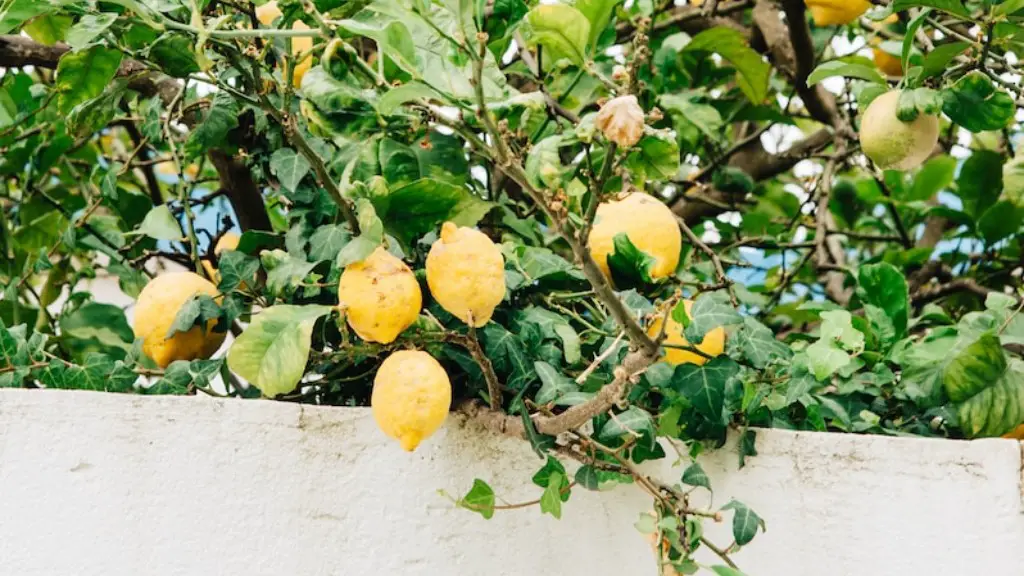Soil Requirements
Avocado trees require well-draining, loamy soil that has a pH of 6-6.5. Sandy loam soils that are rich in organic matter are ideal, as they retain moisture and make nutrition more accessible. Even a small amount of organic matter can make a big difference, as it helps keep soil loose and nourishes the avocado tree. In addition, when planting an avocado tree, it is important to make sure that there is plenty of space for the roots to spread. If the soil is too crowded, the avocado tree roots will not be able to reach the necessary nutrients, air, and water.
Soil amendments can be used to create good drainage and increase the number of nutrients available to the tree. Adding some compost or other organics will help maintain soil moisture during dry periods and keep the pH closer to the ideal level. Permeable mulch is also important, as it helps keep weeds away and keeps soil even moe moist and healthy.
Sun Exposure
Avocado trees require full sun, so when planting one, it is important to choose a spot with plenty of access to sunlight. The tree will require a minimum of 8 hours of direct sunlight each day in order to thrive. Conversely, if the tree is planted in a shaded area, it is likely to produce fewer quality fruits due to a lack of proper light and nutrition.
Trees planted in too much sun may become stressed out, leading to leaf scorch or sunburn. To avoid this, it may be beneficial to provide the tree with some shelter or protection from extreme sunlight during the hottest parts of the day.
Watering and Fertilizing
Once you’ve planted your avocado tree, it is important to provide it with regular maintenance and care. The tree will need to be given ample water on a weekly basis, especially during the warmer months. Soil should be kept slightly moist, and one way to check this is by feeling around the root zone for moisture. Avocado trees will also benefit from regular fertilization, as this helps to promote healthy growth and fruit production.
It is important to note that avocado trees are sensitive to over-fertilization. Fertilizers should be applied as needed, and in moderation. Too much fertilizer can lead to nutrient burn, resulting in reduced crop yields.
Pruning and Training
Pruning and training are important for setting the desired shape and size of your avocado tree. This helps to promote healthy growth and encourages the production of quality fruits. Pruning should be done on a regular basis, and should be focused on removing dead, diseased, and crossing branches. Selective pruning is also important, as it helps to open the canopy of the tree and allows more air and light to reach the interior.
Leaders or main stems should also be trained during the early stages of growth. This helps to create a strong foundation for the tree and encourages it to grow upright.
Once pruned and trained, avocado trees should be protected from pests and diseases. Good cultural practices and preventive methods should be used to ensure that the tree remains healthy and free of pests.
Harvesting and Storage
When it comes time to harvest your avocados, it is important to wait until the fruits have dropped from the tree naturally. If you try to pick them off before they are ripe, they will not be as delicious. Ripe avocados should be soft and slightly yielding to the touch. Once harvested, avocados do not ripen on the tree and should be used as quickly as possible.
If the avocados are not to be used right away, they can be stored in the refrigerator for a few days. Information on ripening the fruits and safety protocols should also be followed to ensure that they remain safe and tasty.
Troubleshooting Pests, Diseases, and Bad Weather
Avocado trees can be susceptible to pests and diseases as well as extreme weather and unfavorable soil conditions. Common pests include aphids, mealy bugs, and thrips, while fungal diseases such as root and stem rot can also be an issue. If left untreated, these problems can greatly reduce the productivity of the tree.
Éxtreme weather events such as high winds and extreme heat or cold can also threaten the health of your tree. In case of a storm or freeze, it is important to take preventive measures to protect the tree from damage.
Raising Avocado Trees from Pit
One of the most interesting and rewarding ways to grow an avocado tree is from the pit. Raising a tree from the seed is a fun and educational process that can also be rewarding in the long-run. To have success with this method, it is important to select a large, healthy seed and provide it with plenty of sunlight, warm temperatures, and adequate water.
In addition, the seed should be planted in a pot filled with loose and well-draining soil. Caring for the seed in it’s early stages is critical, and if done right, it can lead to a healthy and productive tree.
Grafting vs. Seed Propagation
When it comes to growing an Avocado tree, one of the biggest decisions to make is whether to go with seed propagation or grafting. Grafting involves taking a cutting from a mature Avocado tree and then attaching it to a rootstock. This method is faster and results in a more consistent crop, as the initial tree is already productive.
Seed propagation, on the other hand, takes longer but the trees produced are likely to have a greater variety of traits, as each tree will be slightly different.
Services Offered by Professionals
If you’re looking to plant an Avocado tree but don’t want to make all the decisions yourself, there are professionals who can provide assistance. Companies such as Horticultural Services can provide assistance with selecting the ideal species, spot on your property, and results in higher quality product in the long run.
Professional Horticulturalists can also provide assistance with issues such as pruning and fertilizing, as well as helping to identify diseases and pests that may arise throughout the season.
Conclusion
In conclusion, there are a few key factors to keep in mind when planting an Avocado tree. The tree needs to be planted in the right type of soil, in a sunny spot, and with adequate spacing between trees. In addition, the tree will need regular waterings, fertilization, pruning, and pest and disease prevention. Finally, one should keep in mind the grafting vs. seed propagation debate, as well as consulting with a professional. With the right care and attention, an Avocado tree can be a rewarding addition to your home and property.

